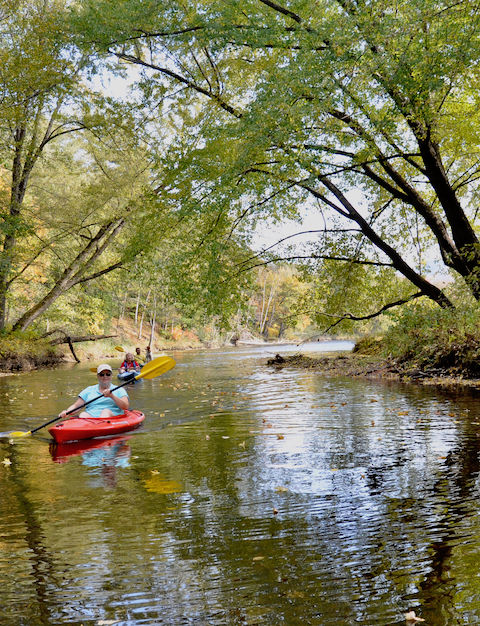MAHOOSUC LAND TRUST
Shelburne Riverlands
Made up of 880-acres that includes nine mainland parcels and more than 30 islands, extends over an 8.7 mile stretch of the Androscoggin River.
The islands and many of the mainland parcels are managed primarily as “wild lands” protecting natural resources and wildlife. A public three-mile network of hiking trails developed by MLT and the Shelburne Trails Club were designed using NH Fish and Game “Trails for People and Wildlife” datasets to minimize wildlife impacts.

How to get there
From Bethel, head west on US-2, turn right on Meadow Road past the Shelburne Village, cross the river and then turn right on North Road. The parking lot is on the right approximately two miles east of Meadow Road and is marked by an MLT yardarm sign. Visitors coming from New Hampshire on US-2 can access North Road from either Meadow Road or the western North Road junction.
The parking lot was designed for only four vehicles and is plowed in the winter at the end of a storm. Parking along the road is not permitted. The trailhead is reached via a short walk on a woods road from the parking lot.


Notes on Topography, plants, and animals
The Riverland’s 14 miles of forested river shoreline and 4 miles of stream shoreline buffers provide travel corridors that are important to a number of species. The surrounding forest offers cover habitat for species such as white-tailed deer, bear, and moose moving between the White Mountain National Forest and the large forest blocks of the Mahoosuc Mountain Range to the north.
The shorelines, stream channels, and wetlands also provide significant habitat for waterfowl including kingfishers, mergansers, great blue heron, Canada geese, and even common loons on the impoundment above the Shelburne Dam. Bald eagles have successfully raised their young along the Riverlands islands and shoreline during the past two decades and are often seen flying over this stretch of the river. River otters also make their home on the river and its many channels, with the river quality now rated Class B.
Riverlands Management
The management and stewardship of Shelburne Riverlands is guided by local members of an MLT stewardship subcommittee with assistance from MLT staff.
As much as 45% of Riverlands is comprised of high value wetlands including streams, floodplain forests, and isolated wetlands. The NH-DES Aquatic Resource Mitigation Fund provided majority funding for the project and DES restrictions guide most management decisions.
The primary management focus has been on protecting natural resource values, enhancing wildlife habitat, and maintaining the wild character of the Androscoggin River as it passes through the Shelburne Valley. Future recreational trails might be constructed on suitable accessible mainland parcels.
The many Riverlands Islands are accessible only by paddlers and will remain trail-less. The cobble sand-bar on Evans Island below the Meadow Road bridge launch will remain a popular lunch and rest stop for paddlers, as well as “Lunch Rocks” on the south shore near the Maine state line.
The mainland parcels had seen timber harvests during the past decade, but remain well forested with a mix of mature and young forest. Any future MLT timber harvests will be limited and based upon maintaining forest health and wildlife habitat.


How this place became open to the public
The islands and low mainland forests of the Shelburne Riverlands were farmlands throughout the 1800’s until the Brown Company began acquiring the abandoned farms in the early 20th Century. Those farms became part of an industrial timberland that then passed through successive paper and timber companies.
When Bayroot, LLC offered to sell the Riverlands parcels in 2020, MLT acquired the Shelburne Riverlands in the Spring of 2021 after a successful one-year campaign. MLT began the project at the town’s request with support from The Conservation Fund.
All of these lands are open to the public for passive recreation and while most will remain as “wild land” without developed parking access, additional recreational hiking trails and parking may be created by the Shelburne Trails Club and Mahoosuc Land Trust on a few of the more accessible parcels


